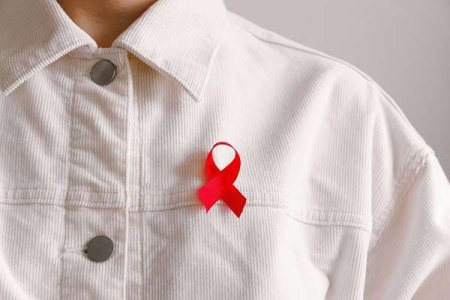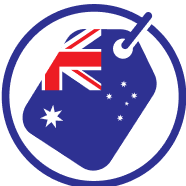Discover How HIV Concerns Have Shifted in the World of 2024: An Eye-Opening Perspective This World AIDS Day
By
Danielle F.
- Replies 7
As we observe World AIDS Day 2024, it's clear that the landscape of HIV and AIDS has undergone significant changes. While the world has made remarkable strides in treatment and prevention, the battle against HIV/AIDS is far from over, and it's evolving in ways that many might not expect.
In Australia, a country known for its robust healthcare system and progressive approaches to HIV management, we're seeing a shift in the demographics of new HIV infections. According to a study by the Kirby Institute, there has been a 21.5 per cent increase in HIV notifications among people from culturally and linguistically diverse (CALD) backgrounds over the past decade. Additionally, there's been a slight uptick in cases resulting from heterosexual sex, despite the overall decrease in HIV notifications by 33 per cent in the same period.

This trend highlights a critical need for tailored education and health promotion efforts. Ruan Uys, a program manager at the Bobby Goldsmith Foundation, emphasises the importance of bringing HIV education for these communities up to 'equilibrium' with that of the gay community. The focus has shifted to these emerging 'new frontiers' in the fight against HIV.
The challenges faced by women, heterosexual men, and culturally diverse communities are unique and often compounded by social stigma and lack of access to information. Mr Uys, who is living with HIV himself, points out that for many in these groups, the reality of living with HIV is starkly different from his own. While he is more concerned about everyday life stresses, others in his community face a daily battle with the virus and its implications.
World AIDS Day, observed since 1988, serves as a poignant reminder to raise awareness about HIV and AIDS and to honour those who have passed from the disease. It's a day to reflect on how far we've come and how much further we need to go.
The personal journey of Mr Uys, diagnosed with HIV in 2014, is a testament to the progress made in the perception and treatment of HIV. Once considered a death sentence, HIV is now a manageable condition, thanks to advancements in medical science and the support of communities and organisations like the Bobby Goldsmith Foundation, Australia's longest-running HIV charity.
One of the most significant breakthroughs in treatment has been the introduction of long-acting injectables, first approved in Australia in 2022. These injections, administered every one to two months, have revolutionised the way people living with HIV manage the virus, offering an alternative to daily pills and reducing the anxiety associated with potential 'viral blips.'
Moreover, the concept of a 'sero-different' relationship, where one partner is HIV positive and the other is HIV negative, has become more widely understood. With effective antiviral treatment, an HIV-positive individual with an undetectable viral load cannot transmit the virus, which has helped to reduce stigma and improve the lives of those in sero-different relationships.
As we commemorate World AIDS Day, it's crucial to recognise the ongoing efforts of organisations like ACON, which focuses on expanding outreach and ensuring that no one is left behind in the fight against HIV. Their Red Ribbon Appeal is a significant fundraising effort that supports these initiatives.
Community advocates like Matt Rule, who has been living with HIV for over a decade, remind us that while transmission rates have decreased, the quality of life for those living with HIV still requires attention. The goal is not only to end transmission but also to support those living with HIV, ensuring they maintain good health and mental well-being.

As members of the Seniors Discount Club, it's important to stay informed and supportive of these issues. HIV may seem like a distant concern for some, but it remains a significant part of our community's health landscape. Let's use World AIDS Day as an opportunity to learn, support, and advocate for those affected by HIV and AIDS. Share your thoughts and experiences in the comments below, and let's continue the conversation to raise awareness and promote understanding.
In Australia, a country known for its robust healthcare system and progressive approaches to HIV management, we're seeing a shift in the demographics of new HIV infections. According to a study by the Kirby Institute, there has been a 21.5 per cent increase in HIV notifications among people from culturally and linguistically diverse (CALD) backgrounds over the past decade. Additionally, there's been a slight uptick in cases resulting from heterosexual sex, despite the overall decrease in HIV notifications by 33 per cent in the same period.

Observed every 1st of December, this year's World AIDS Day occured on a Sunday. Image Credit: Pexels/Anna SHVETS
This trend highlights a critical need for tailored education and health promotion efforts. Ruan Uys, a program manager at the Bobby Goldsmith Foundation, emphasises the importance of bringing HIV education for these communities up to 'equilibrium' with that of the gay community. The focus has shifted to these emerging 'new frontiers' in the fight against HIV.
The challenges faced by women, heterosexual men, and culturally diverse communities are unique and often compounded by social stigma and lack of access to information. Mr Uys, who is living with HIV himself, points out that for many in these groups, the reality of living with HIV is starkly different from his own. While he is more concerned about everyday life stresses, others in his community face a daily battle with the virus and its implications.
World AIDS Day, observed since 1988, serves as a poignant reminder to raise awareness about HIV and AIDS and to honour those who have passed from the disease. It's a day to reflect on how far we've come and how much further we need to go.
The personal journey of Mr Uys, diagnosed with HIV in 2014, is a testament to the progress made in the perception and treatment of HIV. Once considered a death sentence, HIV is now a manageable condition, thanks to advancements in medical science and the support of communities and organisations like the Bobby Goldsmith Foundation, Australia's longest-running HIV charity.
One of the most significant breakthroughs in treatment has been the introduction of long-acting injectables, first approved in Australia in 2022. These injections, administered every one to two months, have revolutionised the way people living with HIV manage the virus, offering an alternative to daily pills and reducing the anxiety associated with potential 'viral blips.'
Moreover, the concept of a 'sero-different' relationship, where one partner is HIV positive and the other is HIV negative, has become more widely understood. With effective antiviral treatment, an HIV-positive individual with an undetectable viral load cannot transmit the virus, which has helped to reduce stigma and improve the lives of those in sero-different relationships.
As we commemorate World AIDS Day, it's crucial to recognise the ongoing efforts of organisations like ACON, which focuses on expanding outreach and ensuring that no one is left behind in the fight against HIV. Their Red Ribbon Appeal is a significant fundraising effort that supports these initiatives.
Community advocates like Matt Rule, who has been living with HIV for over a decade, remind us that while transmission rates have decreased, the quality of life for those living with HIV still requires attention. The goal is not only to end transmission but also to support those living with HIV, ensuring they maintain good health and mental well-being.
Key Takeaways
- New HIV diagnoses are on the rise among populations born overseas and through heterosexual sex in Australia, despite an overall decrease in new HIV notifications.
- Education and health promotion efforts are being shifted towards culturally and linguistically diverse communities to bring awareness to equilibrium with the level seen in the gay community.
- Long-acting injectable treatments for HIV, which can be administered every one to two months, have been approved and are available in Australia, offering greater ease and control for those living with HIV.
- There is a continued focus on ending HIV transmission through education, making Pre-exposure prophylaxis (PrEP) and antiretrovirals accessible, and supporting the quality of life for those living with the virus.







